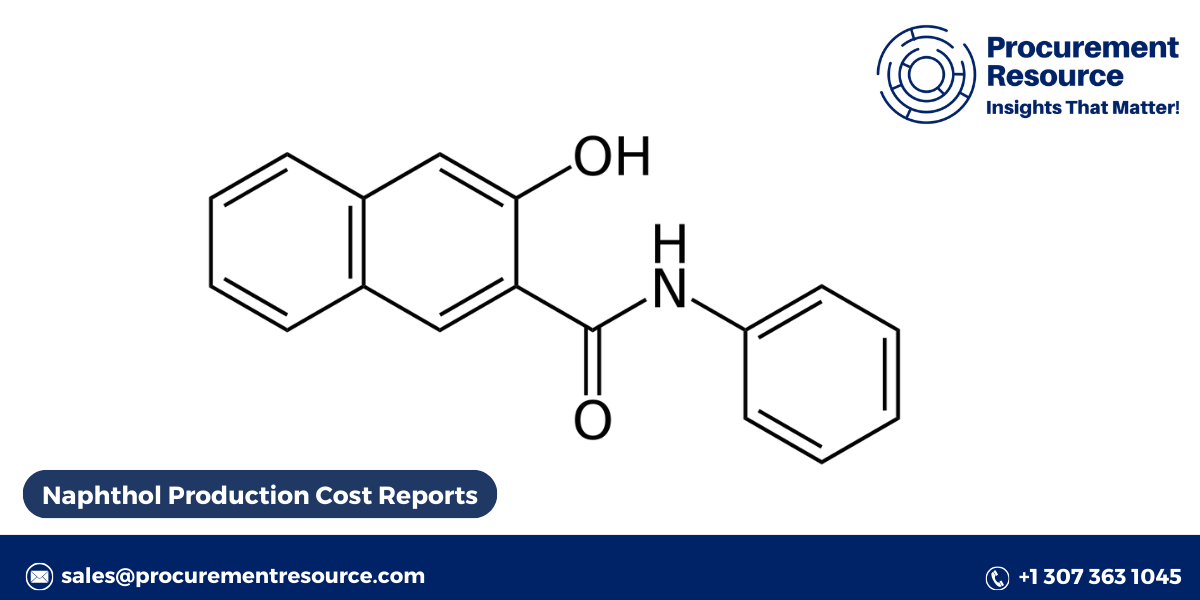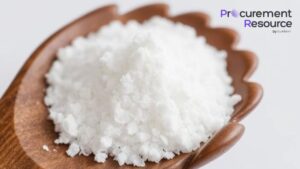
Naphthol is an essential organic compound widely used in the production of dyes, pigments, pharmaceuticals, and other chemical intermediates. It exists in two isomeric forms: alpha-naphthol (1-naphthol) and beta-naphthol (2-naphthol), both derived from naphthalene. The compound plays a critical role in industries such as textiles, pharmaceuticals, and agrochemicals. Understanding the production process of naphthol is crucial to optimizing industrial applications and ensuring cost-efficiency in large-scale production.
This blog provides an in-depth analysis of the naphthol production process, covering the raw materials, methods of synthesis, industrial applications, and an economic analysis of production costs.
Raw Materials for Naphthol Production
The primary raw material for producing naphthol is naphthalene, a hydrocarbon derived from coal tar or petroleum refining. Other chemicals, such as sulfuric acid, sodium hydroxide, and chlorine, are often involved in the various production processes, depending on the method chosen.
The quality of raw materials is vital in ensuring the efficiency of the production process and the purity of the final naphthol product. Impurities in naphthalene can affect the overall yield and introduce contaminants into the naphthol, making purification more challenging.
Request For Sample: https://www.procurementresource.com/production-cost-report-store/naphthol/request-sample
Naphthol Production Processes
- Sulfonation and Hydrolysis Process (for Beta-Naphthol)
- Sulfonation: The production of beta-naphthol often starts with the sulfonation of naphthalene. Naphthalene is reacted with concentrated sulfuric acid to form naphthalene-2-sulfonic acid.
- Alkaline Hydrolysis: The naphthalene-2-sulfonic acid is then hydrolyzed with sodium hydroxide (NaOH) at high temperatures to yield beta-naphthol.
- Purification: After hydrolysis, beta-naphthol is separated from the reaction mixture, typically through distillation or crystallization, and purified to remove any residual impurities.
This method is widely used due to its relatively low cost and high efficiency.
- Chlorination and Hydrolysis Process (for Alpha-Naphthol)
- Chlorination: Alpha-naphthol is produced by chlorinating naphthalene with chlorine gas, leading to the formation of naphthalene-1-chloride.
- Alkaline Hydrolysis: This intermediate is subjected to alkaline hydrolysis in the presence of sodium hydroxide, converting the chloride into alpha-naphthol.
- Purification: The product is purified using techniques like recrystallization, distillation, or filtration to remove unwanted by-products.
This process is known for producing high-quality alpha-naphthol but is more expensive due to the involvement of chlorination, which requires specialized handling and equipment.
Industrial Applications of Naphthol
Naphthol’s versatility makes it highly valuable in various industries:
- Dye and Pigment Industry: Naphthol serves as a precursor in the synthesis of azo dyes, which are extensively used in textile coloring. Beta-naphthol, in particular, is a key component in creating vibrant and stable colors for fabrics.
- Pharmaceuticals: Naphthol derivatives are used in the synthesis of antiseptics and disinfectants. Alpha-naphthol is often employed in the production of pharmaceutical intermediates that are crucial for developing drugs.
- Agrochemicals: Certain naphthol derivatives are utilized in the formulation of pesticides and herbicides, contributing to the agricultural industry’s need for effective crop protection solutions.
- Resins and Coatings: Naphthol compounds are sometimes used in the production of resins and coating agents, enhancing the durability and protective properties of the final product.
Economic Analysis of Naphthol Production
The cost of producing naphthol is influenced by several factors:
- Raw Material Costs: The availability and pricing of naphthalene directly impact the production cost. Coal tar and petroleum-derived naphthalene prices fluctuate with global crude oil prices, influencing overall manufacturing expenses.
- Energy Consumption: Naphthol production is energy-intensive, particularly in the sulfonation and hydrolysis steps. Reducing energy consumption through optimized process parameters can lower the overall production cost.
- Waste Management: Both sulfonation and chlorination processes produce chemical waste that requires treatment and disposal, adding to operational costs. Advances in eco-friendly processes, such as recycling chemicals or reducing waste by-products, are critical in making production more cost-effective and sustainable.
- Purification and Yield: The efficiency of the production process also depends on the purity of the final product. A higher yield reduces waste and increases cost-effectiveness. Advanced purification methods, such as continuous distillation or advanced crystallization techniques, can enhance yield and reduce losses.
Technological Advancements and Sustainability in Naphthol Production
Sustainability is becoming a significant concern in the chemical industry, with manufacturers exploring greener alternatives to traditional production methods. Some approaches to improving the sustainability of naphthol production include:
- Use of Biobased Naphthalene: Developing naphthalene from renewable sources rather than relying on petroleum-based feedstocks can reduce environmental impact.
- Waste Minimization: Implementing closed-loop systems for recycling by-products and reducing emissions helps lower environmental footprint and operational costs.
- Energy-Efficient Processes: Innovations in reaction mechanisms and equipment, such as more energy-efficient reactors, can significantly reduce the energy needed for sulfonation and hydrolysis.
Naphthol is a valuable chemical in various industries, and understanding its production process is critical for optimizing efficiency and reducing costs. Whether through sulfonation and hydrolysis or chlorination and hydrolysis, the production of naphthol relies on sophisticated chemical processes and robust industrial setups.
Economic analysis of production costs, alongside innovations in greener and more energy-efficient methods, continues to drive the naphthol market forward, providing opportunities for industries to benefit from this versatile compound. As the demand for naphthol grows in areas such as dyes, pharmaceuticals, and agrochemicals, improvements in the production process will further contribute to industrial and economic development.
Contact Us:
Company Name: Procurement Resource
Contact Person: Endru Smith
Email: sales@procurementresource.com
Toll-Free Number: USA & Canada - Phone no: +1 307 363 1045 | UK - Phone no: +44 7537 132103 | Asia-Pacific (APAC) - Phone no: +91 1203185500
Address: 30 North Gould Street, Sheridan, WY 82801, USA



